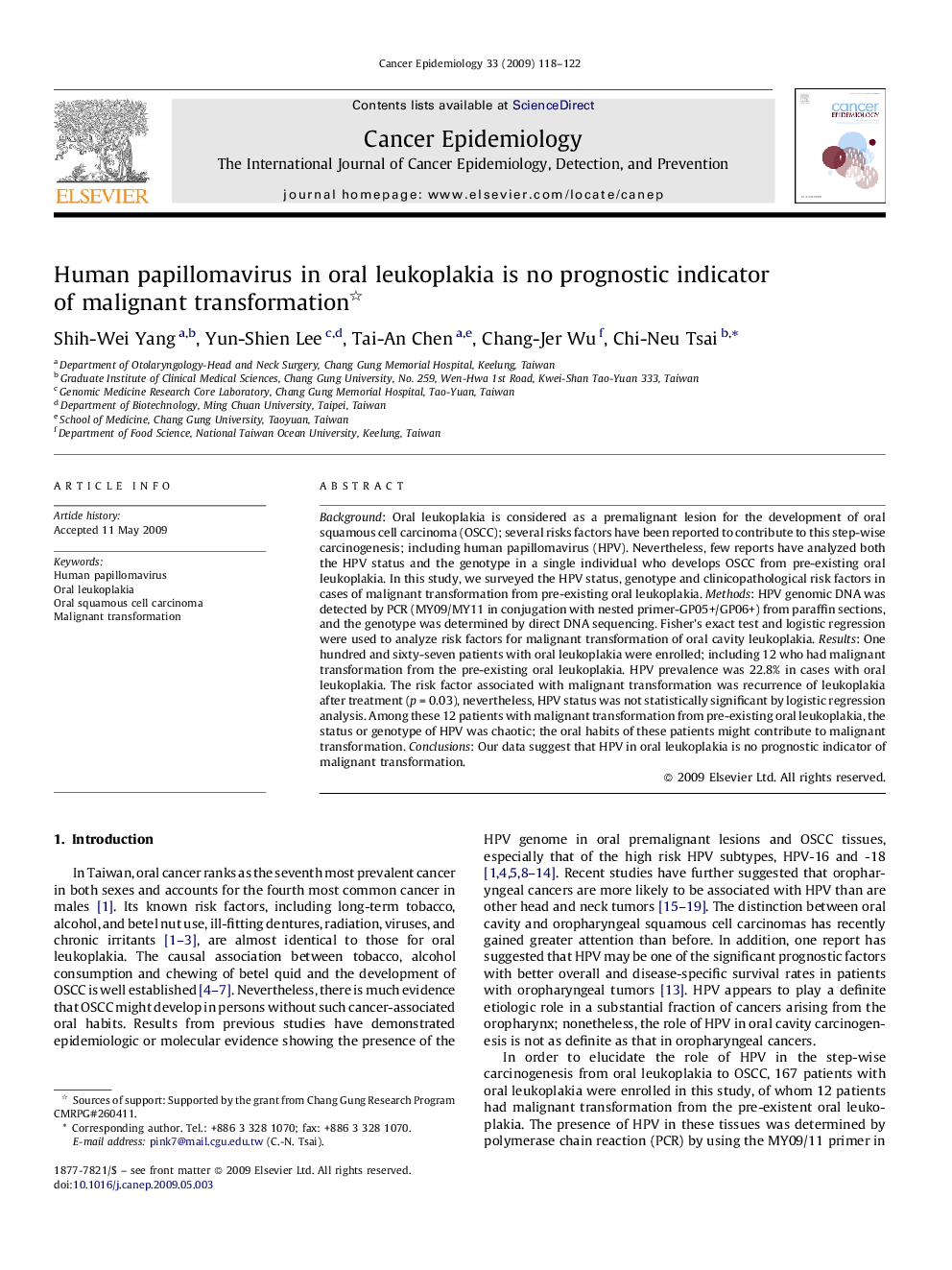| Article ID | Journal | Published Year | Pages | File Type |
|---|---|---|---|---|
| 2109472 | Cancer Epidemiology | 2009 | 5 Pages |
Background: Oral leukoplakia is considered as a premalignant lesion for the development of oral squamous cell carcinoma (OSCC); several risks factors have been reported to contribute to this step-wise carcinogenesis; including human papillomavirus (HPV). Nevertheless, few reports have analyzed both the HPV status and the genotype in a single individual who develops OSCC from pre-existing oral leukoplakia. In this study, we surveyed the HPV status, genotype and clinicopathological risk factors in cases of malignant transformation from pre-existing oral leukoplakia. Methods: HPV genomic DNA was detected by PCR (MY09/MY11 in conjugation with nested primer-GP05+/GP06+) from paraffin sections, and the genotype was determined by direct DNA sequencing. Fisher's exact test and logistic regression were used to analyze risk factors for malignant transformation of oral cavity leukoplakia. Results: One hundred and sixty-seven patients with oral leukoplakia were enrolled; including 12 who had malignant transformation from the pre-existing oral leukoplakia. HPV prevalence was 22.8% in cases with oral leukoplakia. The risk factor associated with malignant transformation was recurrence of leukoplakia after treatment (p = 0.03), nevertheless, HPV status was not statistically significant by logistic regression analysis. Among these 12 patients with malignant transformation from pre-existing oral leukoplakia, the status or genotype of HPV was chaotic; the oral habits of these patients might contribute to malignant transformation. Conclusions: Our data suggest that HPV in oral leukoplakia is no prognostic indicator of malignant transformation.
